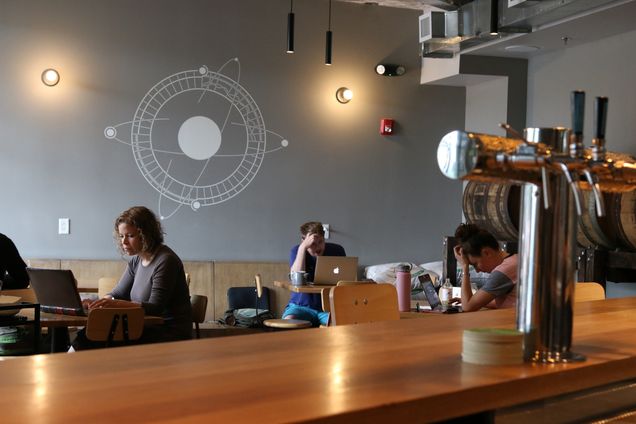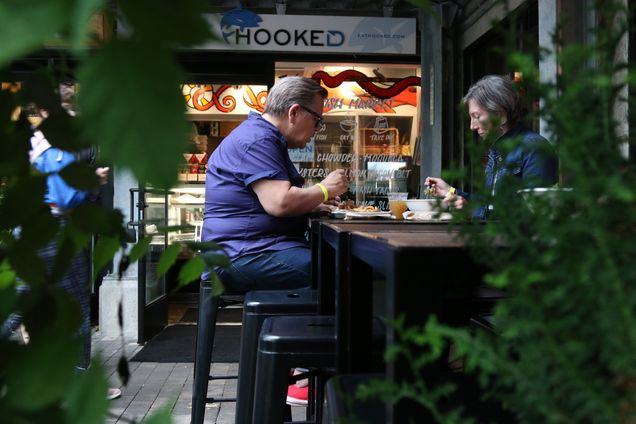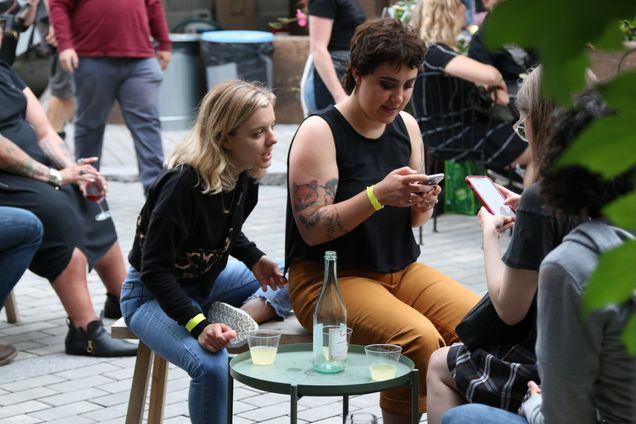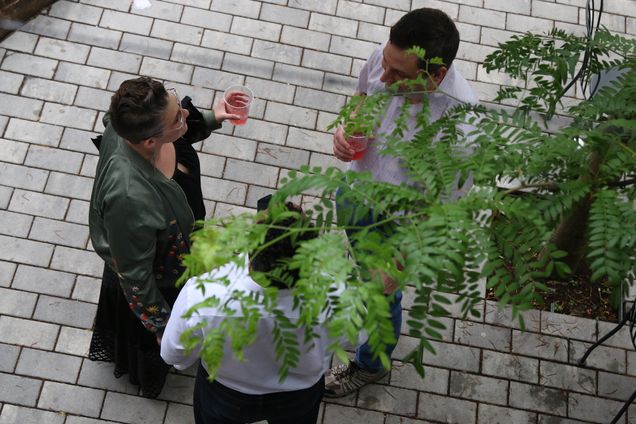Behind the Counter: an Anthropological View From Inside the Food Industry
Students Karen Metheny’s summer course, Anthropology of Food (MET ML 641) are contributing guest posts. Today’s is from Gastronomy student Caley Mahoney, who conducted participant observation for this article.
It wasn’t until I used my position as a bartender and barista for a class project that I realized I had been conducting amateur anthropological research, unconsciously, for years. My role as a participant-observer (AKA an employee in the food industry) was driven by economic concerns, such as making enough money for food and rent, yet at the same time, I had been observing and learning. I have worked in the food industry for almost a decade: I’ve been in lower positions like a hostess and a food runner, moved up a few levels to cheesemonger and caterer, and hit my peak as a manager of a store making buying decisions about beer and wine and running events and marketing. No matter what level of the ladder I was on, every job I worked has brought me intimately close to the public, to the consumers. Being a part of the food industry has given me access to YOU, the consumer; to your everyday, unconsciously repeated norms that I have come to anticipate before they happen, to the extraordinary, bizarre, random instances of human individuality that make me question it all.

Imagine my surprise when I discovered I had been a researcher this whole time. Disguised in an apron and from behind the counter, I had been observing patterns of human interactions and consumption. My field of ethnographic research wasn’t located in some remote village in sub-Saharan Africa, it was at the register of a cafe, on the floor of a restaurant, and behind the bar of a brewery. As workers of the industry (the good ones anyways) we have learned to anticipate customer needs through thorough observation; we guide you in your choices, we serve you “the usual,” we get you, we know you. We know you, because we’ve been WATCHING YOU, the whole time. (Yes, this sounds creepy, but it’s our job…)

We watch the way you move through our spaces and the way you interact with others. We notice which foods you are drawn to and which ones deter you because of foreign ingredients or fancy labels. We read the calculated decisions about calories and caffeine intake that play out on your faces as you order coffee in the morning. We observe how you fail to read signs that we have painstakingly placed in your path and we know when you get confused by which cut of meat is which, eventually give up and grab a box of pasta instead. We watch you, in order to better serve you. (And to occasionally write a paper for a class on the movements and choices of consumers in public food spaces.)
The line between my life in the food industry and my life as a student studying food is one that easily, and usually, crossed. My two worlds have become so intertwined that I can’t help but notice how Sarah has created a ritualized form of self-imposed food rules, which only allow her post-workout self to indulge in a double chocolate brownie on Saturdays. And isn’t it incredibly obvious that a gendered power struggle between Jim and Martha surfaces every time they order a cappuccino and half-caf almond milk latte? (All names have been changed to protect the anonymity of my research participants). (Also, none of them know that they are research participants in my unintentional study).

Many of my fellow industry workers see the patterns in public food consumption, the gendered and ethnic based biases, and the various issues of economic and political concern throughout their daily work with food (even if they aren’t conscious of them like I am now). As an industry, we share a heightened sense of awareness, like dogs with their sense of smell; we are a specific breed of human, we can’t help how well we notice and how much we observe. With our specific roles as purveyors of food, we hold not only vital sources of nourishment but we also shape the environment in which consumers make choices that aid in the creation of their identities! And we know these identities: we know how what kind of wine you like to drink, we remember that you don’t like pickles on your Italian sandwich, and we expect to see you every Saturday after yoga. We know your identities because your food choices and foodways tells us these things… and because, well, we are always watching.
